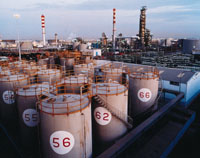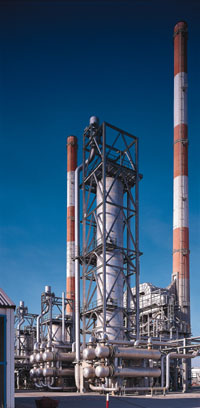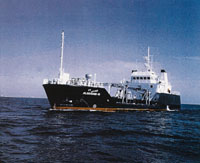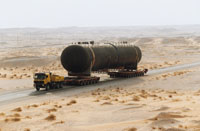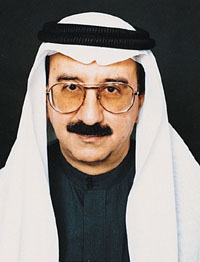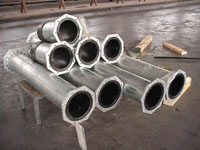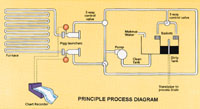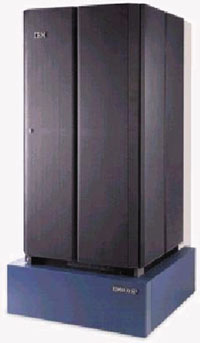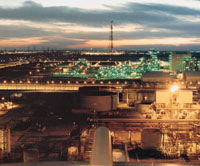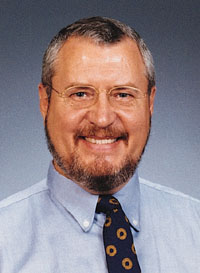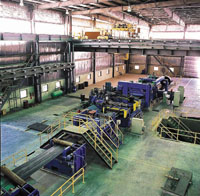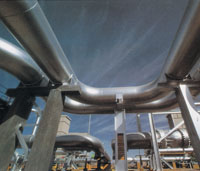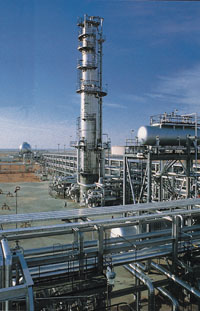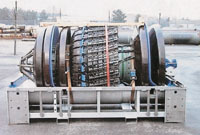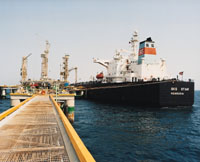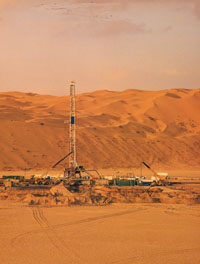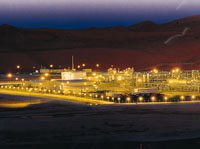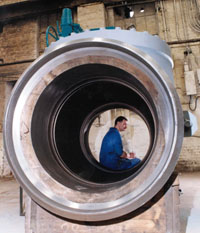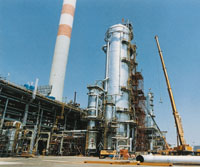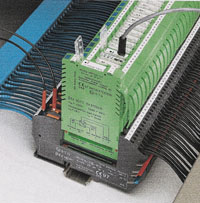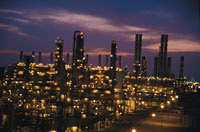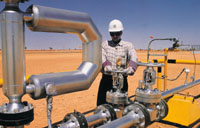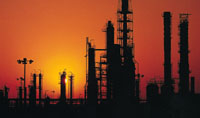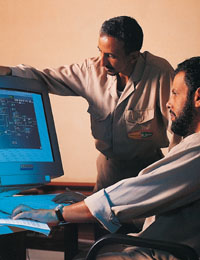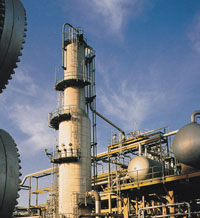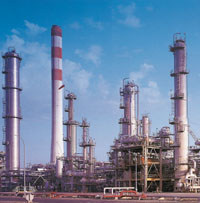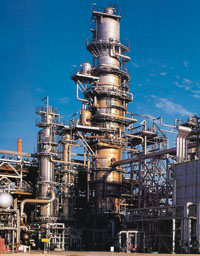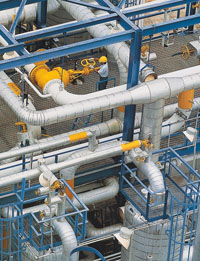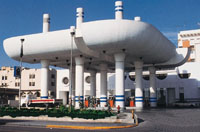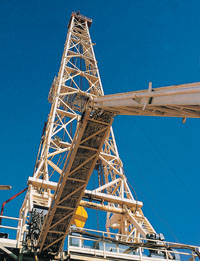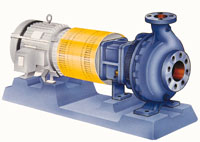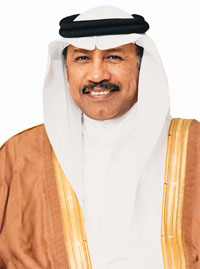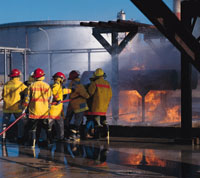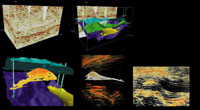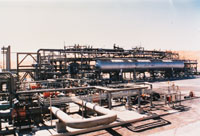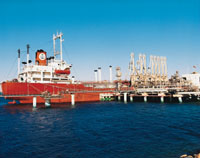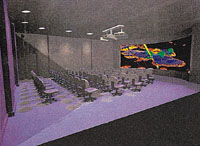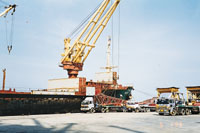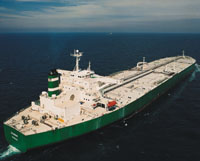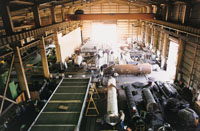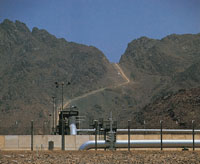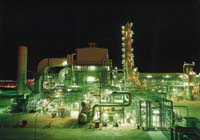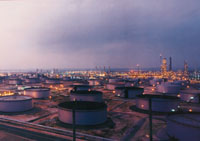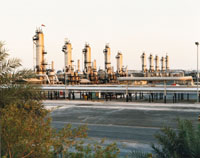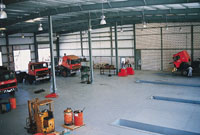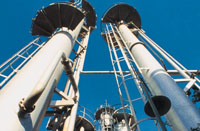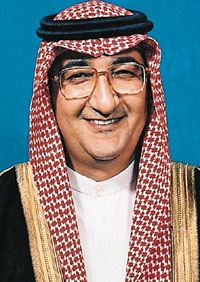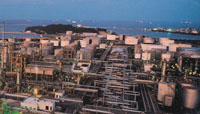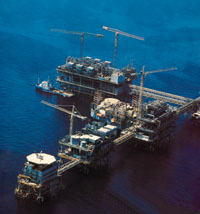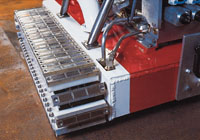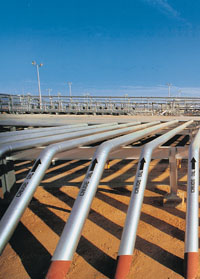
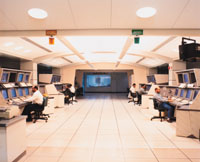
The aggressive exploration and development of gas resources is ongoing at Saudi Aramco, with expansions to the Master Gas System (MGS) and increased use of gas to power the country's industries. OGN looks at the latest developments.Most people associate Saudi Arabia with oil, and the Kingdom occupies the world's leading position in terms of oil production and reserves.
However, the country also has an abundance of another hydrocarbon - gas. It is nature's cleanest burning hydrocarbon and a valuable source of feedstock for the Kingdom's massive petrochemicals production.
Saudi Arabia's gas business has grown steadily over the years to the point where it now ranks among the world's top ten, and new discoveries in the Haradh area have added significantly to its gas reserves.
Gas is now big business in Saudi Arabia, and Saudi Aramco is currently pursuing a major incremental development of these gas reserves.
Saudi Aramco's Master Gas System (MGS), built in the 1970s to gather and utilise the gas associated with the company's oil production, brought outstanding economic benefits to Saudi Arabia - affordable utilities, high-growth petrochemical industries, additional industries which utilise gas for fuel, environmental benefits from substituting clean-burning gas for liquid fuels and the economic benefits of fuel switching to free up hydrocarbon liquids for export.
The MGS is an integrated gas collection, recovery, and processing system, which utilises state-of-the-art technology.
The ultra-large processing facilities constructed at Berri, Shedgum, and 'Uthmaniyah treat the gas and recover natural gas liquids (NGL).
These facilities supply gas to the sales gas distribution grid and NGL to the downstream fractionation plants constructed at Ju'aymah and Yanbu. These downstream fraction facilities supply petrochemical feedstock and liquid petroleum gas (LPG) for export and local industrial consumption.
Over the last 20 years demand for sales gas delivered by the MGS has grown rapidly in both the industrial and power generation sectors, encouraged by plentiful gas supply and low prices.
Today Saudi Arabia utilises more gas per capita than some of highest income Organisation for Economic Cooperation and Development (OECD) countries such as the UK, Germany, and Japan - and the demand for gas continues to grow as the country's domestic and industrial bases expand.
Saudi Aramco says that it is committed to expanding this critical energy resource. To meet the demand, huge new processing facilities are being added to the MGS and exploration for non-associated gas is proceeding at a rapid pace.
Because of the inflexibility of associated gas production (which can only increase if and when oil production increases), Saudi Aramco began to develop nonassociated gas in the early 1980s to provide fuel and feedstock to domestic industries during periodic shortfalls of associated gas supplies.
By the mid-1980s the MGS was enlarged to produce, gather, and process high-pressure, non-associated gas from Saudi Arabia's deep Khuff reservoirs. Since the Khuff gas is independent of crude oil production, it is used as an incremental supply of feed gas to the Shedgum and 'Uthmaniyah gas plants.
Saudi Aramco has come to regard non-associated gas as a vital source of energy and has expanded a number of ambitious programmes designed to meet the Kingdom's long-term demand.
In addition to imparting additional momentum to already intense exploratory and development drilling, Saudi Aramco has adopted breakthrough productivity enhancement technology from existing non-associated gas wells, has debottlenecked gas processing plants at Berri, Shedgum and 'Uthmaniyah, and began the design and construction of major new gas plants at Hawiyah and Haradh.
All these gas processing facilities were consolidated under the newly established Gas Operations administrative area in the middle of last year.
Saudi Aramco is expanding the MGS sales gas capacity by 122 per cent. Construction has recently been completed on expanding the gas processing facilities at the 'Uthmaniyah and Berri plants while construction for Shedgum is expected to be completed shortly.
The total increase amounts to 970 million cu ft per day for a total MGS capacity of about 4.2 billion cu ft per day. All three plants are getting additional sulphur recovery units.
Construction of the new Hawiyah and Haradh plants will add a much larger increment. Each plant will boost the sales gas capacity by 1.4 billion cu ft per day and bring the combined maximum operating capacity to almost seven billion cu ft per day.
These increments will serve the gas needs of the Central Region of Saudi Arabia. The new Hawiyah facility is scheduled for completion in late next year and Haradh in late 2003.
Last year Saudi Aramco discovered two more gas fields in the Eastern Province, with estimated total reserves of six billion barrels of condensate and four trillion cu ft of natural gas.
The Niban field, located 90 km southeast of the Ghawar field, and the Shaden field, 60 km southwest of Ghawar, are the sixth and seventh non-associated gasfields discovered by Saudi Aramco.
In an open-hole drill stem test, the Niban-2 discovery well flowed 1,400 barrels of 51 deg APl condensate and 1.4 million cu ft of gas per day. The Shaden-I well flowed eight million cu ft of gas per day
Providing sales gas as the primary fuel for Saudi power plants and other industries will make additional liquid hydrocarbon products available for export, generating additional revenue for the Kingdom.
In pursuit of this goal, Saudi Aramco worked to expand, extend, and improve the reliability of the Kingdom's sales gas transmission systems.
The extension of the MGS to Riyadh has been completed, so that sales gas can eventually replace Arabian Light crude as the fuel for the Saudi Electricity Company's three largest power plants in the capital and its environs.










































































